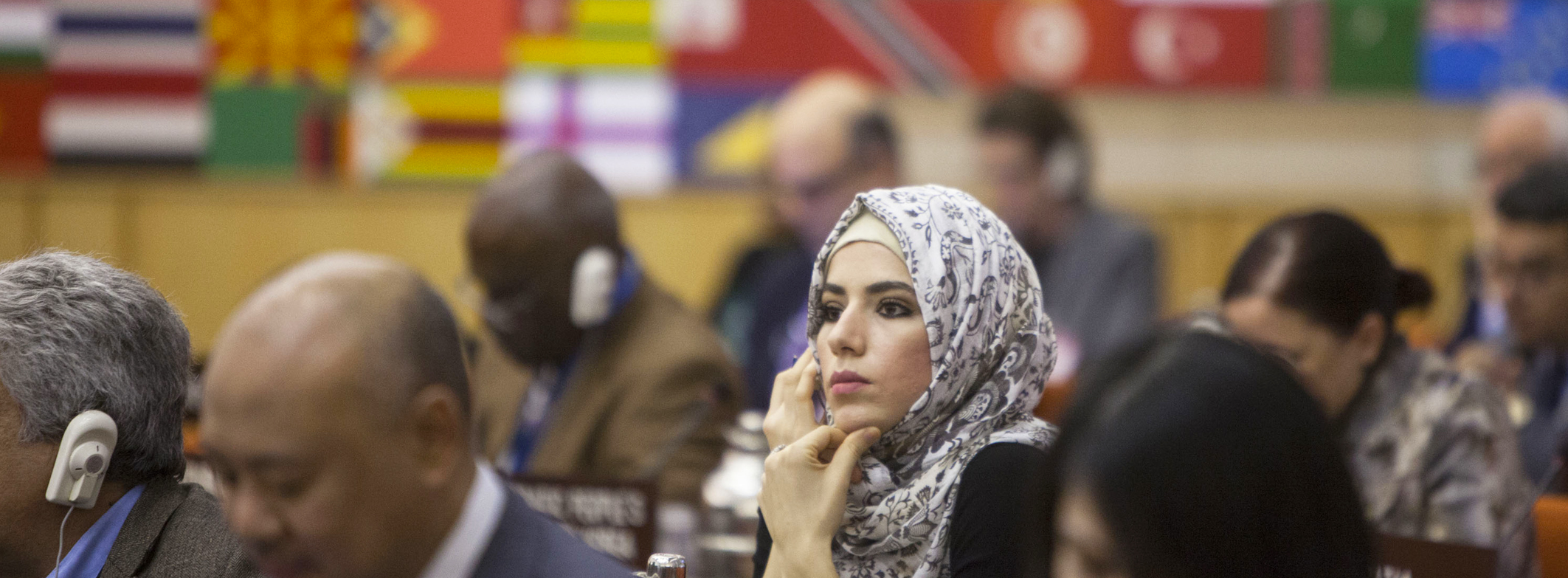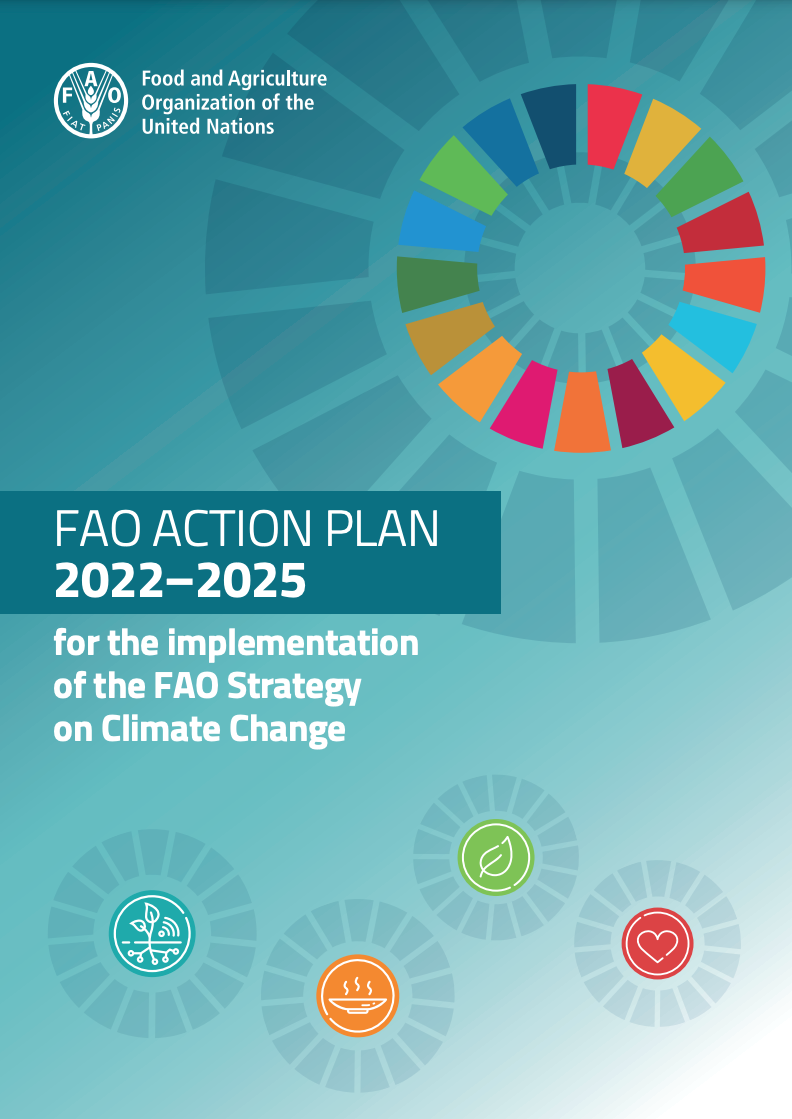
FAO Strategic Framework 2022-2031
How FAO supports
FAO Strategy on Climate Change
FAO’s new Strategy on Climate Change 2022–2031 builds on the 2017 FAO Strategy on Climate Change, latest international developments and scientific evidence. It is closely aligned with the Strategic Framework’s Programme Priority Area 'Better Environment' 1. Climate change mitigating and adapted agrifood systems.
The Strategy cuts across all of 20 Programme Priority Areas as it strives to achieve Sustainable Development Goal 13 ‘Climate Action’ in agrifood systems. Through the Strategy, FAO supports Member countries to adopt good practices and innovative solutions to address climate resilience, adaptation and mitigation for sustainable agrifood systems.
The Strategy comprises three Pillars focusing on action at three levels:
I. Global and regional levels: Strengthening global and regional climate policy and governance.
II. Country level: Developing countries’ capacities for climate action.
III. Local level: Scaling up climate action on the ground.
Through the Strategy, FAO supports Member countries to adopt good practices and innovative solutions to address climate resilience, adaptation and mitigation for sustainable agrifood systems.
The Four betters
The narrative guiding FAO’s Strategic Framework is the transformation to MORE efficient, inclusive, resilient and sustainable agrifood systems through the Four Betters: better production, better nutrition, a better environment, and a better life, leaving no one behind. The four betters are principles through which FAO intends to contribute directly to SDG 1 (No poverty), SDG 2 (Zero hunger), and SDG 10 (Reduced inequalities) as well as to support the achievement of the broader SDG agenda.

Ensure sustainable consumption and production patterns, through efficient and inclusive food and agriculture supply chains at local, regional and global level, ensuring resilient and sustainable agrifood systems in a changing climate and environment.
Programme Priority Areas:
- Innovation for sustainable agriculture production
- Blue transformation
- One Health
- Small-scale producers’ equitable access to resources
- Digital agriculture

End hunger, achieve food security and improved nutrition in all its forms, including promoting nutritious food and increasing access to healthy diets.
Programme Priority Areas:
- Healthy diets for all
- Nutrition for the most vulnerable
- Safe food for everyone
- Reducing food loss and waste
- Transparent markets and trade

Protect, restore and promote sustainable use of terrestrial and marine ecosystems and combat climate change (reduce, reuse, recycle, residual management) through more efficient, inclusive, resilient and sustainable agrifood systems.
Programme Priority Areas:
- Climate change mitigating and adapted agrifood systems
- Bioeconomy for sustainable food and agriculture
- Biodiversity and ecosystem services for food and agriculture
- Achieving sustainable urban food systems

Promote inclusive economic growth by reducing inequalities (urban/rural areas, rich/poor countries, men/women).
Programme Priority Areas:
- Gender equality and rural women’s empowerment
- Inclusive rural transformation
- Agriculture and food emergencies
- Resilient agrifood systems
- Hand-in-Hand (HIH) Initiative
- Scaling up investment
Programme Priority Areas
The Medium-Term Plan 2022-25 (MTP) and Programme of Work and Budget builds on the Strategic Framework and on the structural changes that have been put in place to better prepare FAO for the trends and challenges facing food and agriculture.
As detailed in the MTP, a set of Programme Priority Areas guide the programmes that FAO is implementing under the four betters to fill critical gaps and put in place the conditions needed to drive the changes that will contribute to the achievement of the selected Sustainable Development Goal targets.
Latest publications

Strategic Framework 2022-2031
2021
This document was developed in the context of major global and regional challenges in the areas of FAO's mandate, including the COVID-19 pandemic. Endorsed at the 42nd session of the FAO Conference on 18 June 2021, it seeks to support the 2030 Agenda through the transformation to a more efficient, inclusive, resilient and sustainable agri-food systems for better production, better nutrition, a better environment, and a better life, leaving no one behind.

FAO STRATEGY ON CLIMATE CHANGE 2022-2031
2022
The FAO Strategy on Climate Change 2022–2031 was endorsed by FAO Council in June 2022. This new strategy replaces the previous strategy from 2017 to better FAO's climate action with the Strategic Framework 2022-2031, and other FAO strategies that have been developed since then.

FAO Action Plan 2022–2025 for the implementation of the FAO Strategy on Climate Change
2023
The elements of the Action Plan are derived from the Theory of Change anchored in the Strategy. The Action Plan is therefore articulated around the three pillars and six outcomes of the Strategy. In addition, and with the aim to provide more clarity, action areas have been introduced to cluster the outputs, which are concrete results contributing to each outcome of the Strategy.
